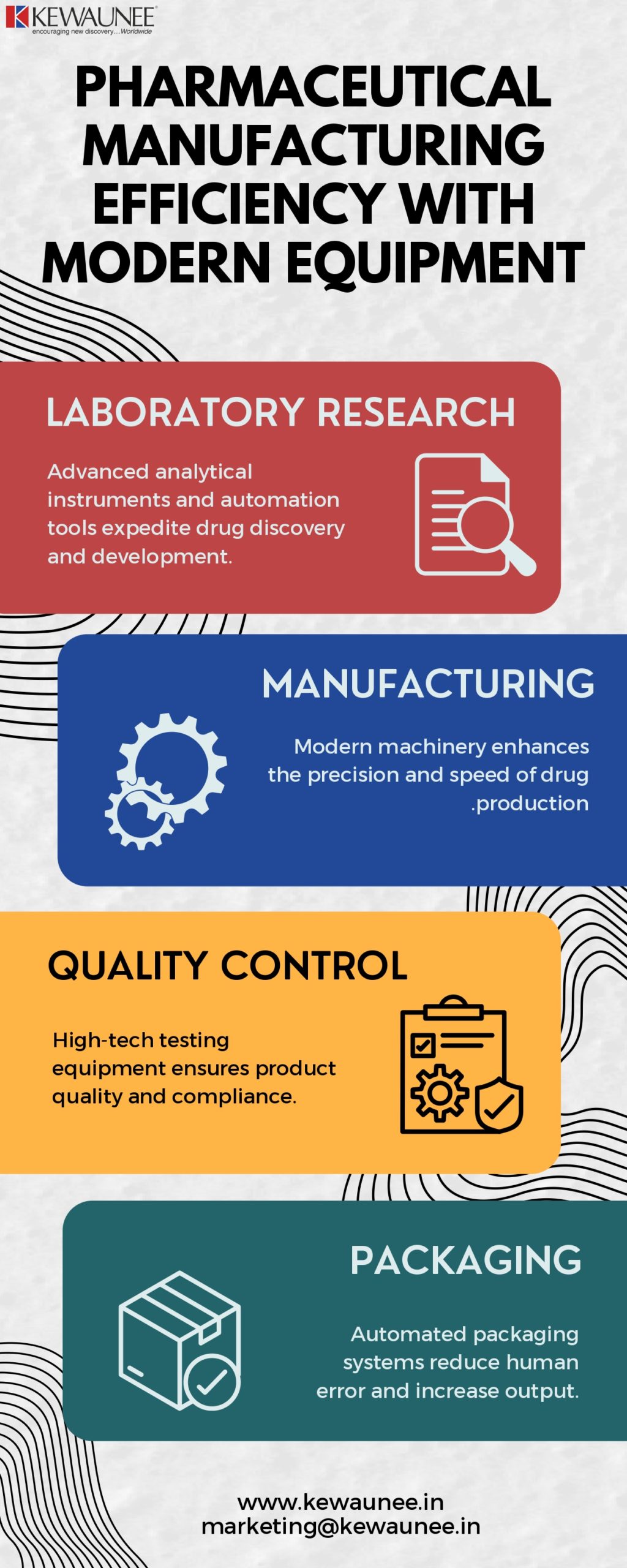Pharmaceutical Manufacturing Efficiency with Modern Equipment
In the dynamic landscape of pharmaceutical manufacturing, efficiency is not just a desirable trait; it’s a fundamental necessity. The industry faces evolving challenges, including stringent regulations, increasing competition, and the urgent demand for innovative medications.
To thrive in this environment, pharmaceutical manufacturers must leverage every available advantage. One of the most impactful ways to boost efficiency is through the adoption of modern equipment and technologies.
In this blog, we’ll explore how cutting-edge equipment is transforming pharmaceutical manufacturing, from research and development to production.
1. The Quest for Pharmaceutical Efficiency
Pharmaceutical manufacturing is a complex and highly regulated field. From drug discovery to final product distribution, it involves intricate processes, stringent quality control, and compliance with Good Manufacturing Practices (GMP). Efficiency is crucial at every stage to reduce costs, shorten time-to-market, and ensure product quality.
Key Goals of Pharmaceutical Efficiency:
- Cost Reduction: Streamlining processes and resource allocation to minimize expenses.
- Speed to Market: Accelerating the development and production of new medications.
- Quality Assurance: Maintaining consistent product quality to meet regulatory standards.
- Innovation: Fostering an environment that encourages research and development.
2. The Role of Modern Equipment
Modern equipment is the linchpin of pharmaceutical efficiency. It encompasses a wide range of machinery, instruments, and technologies designed to optimize various manufacturing processes. From research laboratories to large-scale production facilities, the pharmaceutical industry benefits from innovative equipment solutions.
Key Areas of Impact:
- Laboratory Research: Advanced analytical instruments and automation tools expedite drug discovery and development.
- Manufacturing: Modern machinery enhances the precision and speed of drug production.
- Quality Control: High-tech testing equipment ensures product quality and compliance.
- Packaging: Automated packaging systems reduce human error and increase output.
3. Laboratory Efficiency
Laboratories are the birthplaces of pharmaceutical innovation. Research and development (R&D) efforts are concentrated here, and efficiency is paramount to accelerate the journey from concept to market.
Advancements in Laboratory Equipment:
- Automated Liquid Handling: Precision dispensing systems speed up sample preparation and reduce errors.
- High-Throughput Screening (HTS): Automated HTS platforms enable rapid testing of thousands of compounds.
- Laboratory Information Management Systems (LIMS): Digital tools for data management and analysis streamline research workflows.
- Robotic Automation: Robots assist in repetitive tasks, ensuring consistency and freeing up researchers for more creative work.
4. Manufacturing Optimization
Efficient pharmaceutical manufacturing requires meticulous control over various processes, from mixing and granulation to tablet compression and packaging. Modern equipment revolutionizes these processes.
Impactful Manufacturing Equipment:
- Continuous Manufacturing Systems: These systems allow uninterrupted production, reducing cycle times and resource consumption.
- Tablet Presses: High-speed tablet presses produce large quantities of pills with precision.
- Lyophilization (Freeze-Drying) Equipment: Advanced lyophilization technologies improve product stability and shelf life.
- Cleanroom Automation: Robots and automated systems minimize contamination risks and enhance cleanliness.
5. Quality Control Advancements
Quality control is non-negotiable in pharmaceutical manufacturing. Advanced equipment plays a pivotal role in ensuring that every product meets rigorous quality standards.
Innovative Quality Control Equipment:
- Spectrophotometers: These devices provide precise measurements of compounds’ properties, ensuring product consistency.
- Mass Spectrometers: High-resolution mass spectrometry allows for accurate identification and quantification of compounds.
- High-Performance Liquid Chromatography (HPLC): Advanced HPLC systems facilitate separation and analysis of complex mixtures.
- X-ray Inspection Systems: These systems detect defects in tablets, capsules, and packaging materials with exceptional accuracy.
6. The Path Forward
The pharmaceutical industry’s pursuit of efficiency is an ongoing journey. As technology continues to advance, manufacturers must stay at the forefront of innovation. Embracing the latest equipment and technologies is not just a matter of staying competitive; it’s a commitment to improving public health by delivering safe and effective medications.
Key Strategies for the Future:
- Continuous Learning: Investing in training and development to maximize the potential of modern equipment.
- Adaptability: Being prepared to integrate new technologies and equipment as they emerge.
- Collaboration: Partnering with equipment manufacturers and industry experts to identify and implement efficiency-enhancing solutions.
- Regulatory Compliance: Ensuring that all equipment and processes adhere to regulatory standards.
Summary
Efficiency is the lifeblood of pharmaceutical manufacturing. Modern equipment and technologies are catalyzing transformative changes in the industry, from laboratory research to large-scale production. By embracing these advancements and aligning with the key goals of cost reduction, speed to market, quality assurance, and innovation, pharmaceutical manufacturers are poised to meet the evolving challenges and make a lasting impact on global healthcare.
Efficiency isn’t just a goal; it’s a commitment to delivering life-saving medications to those who need them most, efficiently and reliably. The pharmaceutical industry’s journey toward greater efficiency continues, driven by innovation and the unwavering dedication to improving patients’ lives.
Comments are closed.











